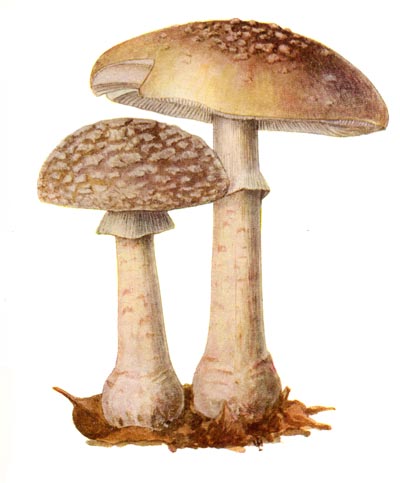Tolosa beans. A Basque dish consisting of pork, onions, garlic and chillis cooked with beans. Can include black pudding (US: blood sausage). or chorizo.

Fly agaric. A type of mushroom, the classic red with white spots. Famous for its psychoactive hallucinogenic properties this is the magic mushroom and is actually poisonous to eat.

The blusher. The one problem with this mushroom is that, whilst edible itself, it closely resembles others that are poisonous, including the death cap. It must be cooked as it contains a toxin which is destroyed by heat, like kidney beans. The most identifiable thing about it is that this reddish brown mushroom with pinkish grey scales and a white stem colours pink to red at sites of damage or bruising. The gills and flesh are white, also becoming red or pink on bruising. It is most commonly found in beech woods in summer to late autumn (US: fall). Also look closely at the ring on the stem. This should have lots of fine grooves on its upper side, unlike another poisonous mushroom which it closely resembles, the panther cap.

The blusher. The one problem with this mushroom is that, whilst edible itself, it closely resembles others that are poisonous, including the death cap. It must be cooked as it contains a toxin which is destroyed by heat, like kidney beans. The most identifiable thing about it is that this reddish brown mushroom with pinkish grey scales and a white stem colours pink to red at sites of damage or bruising. The gills and flesh are white, also becoming red or pink on bruising. It is most commonly found in beech woods in summer to late autumn (US: fall). Also look closely at the ring on the stem. This should have lots of fine grooves on its upper side, unlike another poisonous mushroom which it closely resembles, the panther cap.